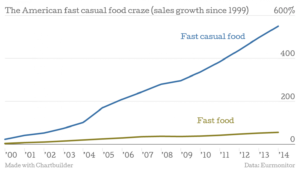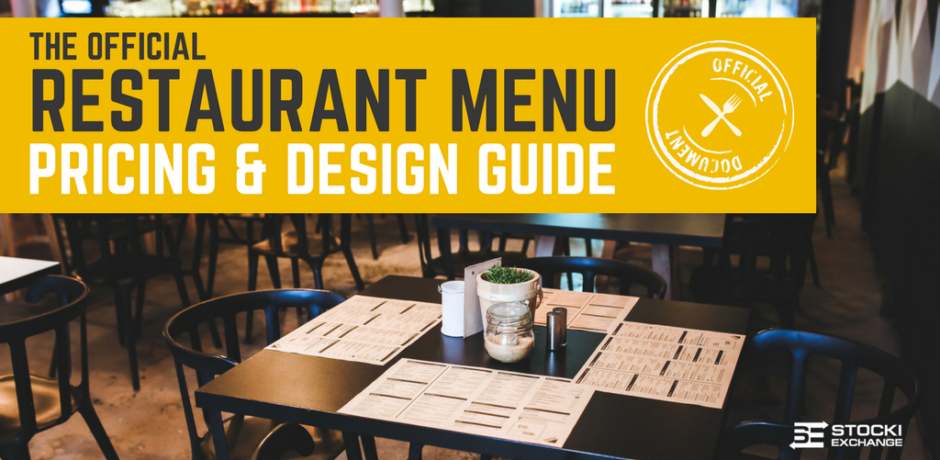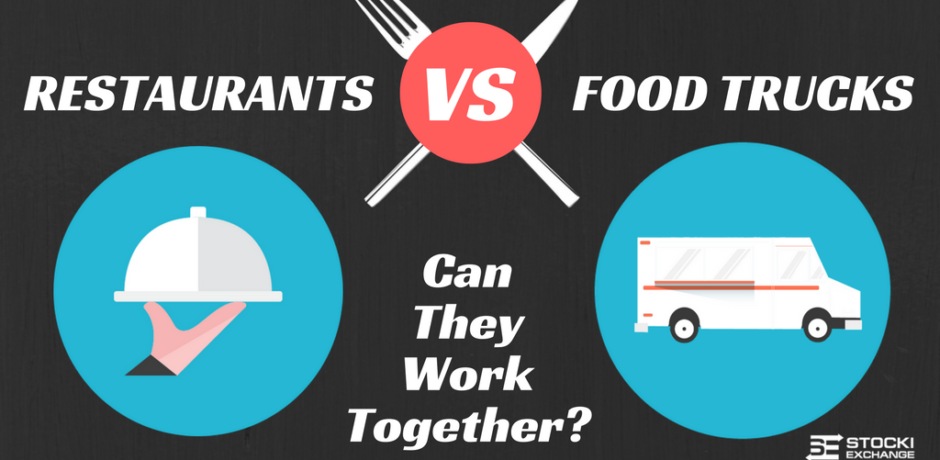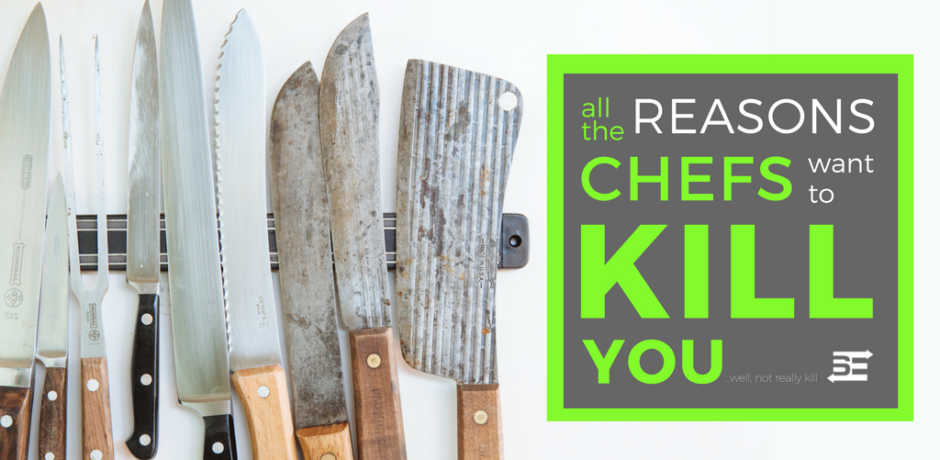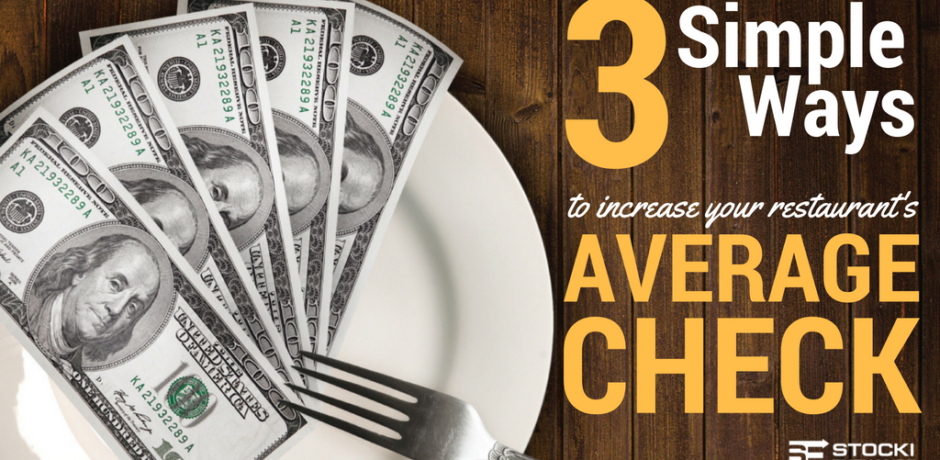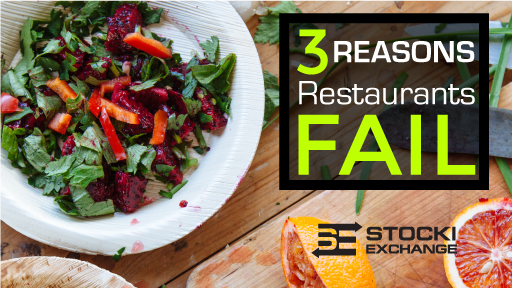Category: Restaurants
In Michigan, a controversial bill banning local governments from regulating, taxing, and/or banning plastic bags and other single-use or reusable containers passed on Wednesday, December 28, 2016. The bill was signed by Lt. Governor Brian Calley while Governor Rick Snyder was out of state on vacation says MLive.
Senate Bill 853, championed by the Michigan Restaurant Association (MRA), has passed banning local Michigan governments from
“regulating the use, disposition, or sale of, prohibiting or restricting, or imposing any fee, charge, or tax on…auxiliary containers”, defined as “a bag, cup, bottle, or other packaging, whether reusable or single-use…designed for transporting, consuming, or protecting merchandise, food, or beverages from or at a food service or retail facility.”
In claiming a victory, the MRA press release quotes VP of Government Affairs for the MRA, Robert O’Meara as saying,
“With many of our members owning and operating locations across the state, preventing a patchwork approach of additional regulations is imperative to avoid added complexities as it related to day-to-day business operations.”
The below headline from an MLive.com Facebook Post places an emphasis on plastic bags but the totality of the new regulation is quite a bit more complex. While the bill does stop local governments from banning or taxing the use of plastic bags, it also stops them from doing the same to take-away cups from coffee shops, to-go containers from any restaurant, as well as any other reusable or single-use packaging that is made of “cloth, paper, plastic, cardboard, corrugated material, aluminum, glass, post-consumer recycled material, or similar material or substrates, including coated, laminated, or multi-layer substrates.”
Globally, over 20 countries have either charges, taxes, and/or bans on the use of disposable plastic bags, including the United States, where up to 20 states and 132 cities have bans in place or pending. Every year, Americans generate 258 million tons of trash and in 2014 they recycled and composted 89 million tons of Municipal Solid Waste (MSW).
What is the Next Move for the Hospitality Industry?
Restaurants contribute heavily to the usage of disposable and/or one-time-use products, particularly fast-casual establishments. A Washington Post article states,
“The market for fast-casual food…has grown by 550% since 1999…” and “Americans spent more than $21 billion at fast casual restaurants last year…”
While the definition of a fast-casual restaurant is somewhat of a gray area, restaurant chains Chipotle and Panera are widely-used examples of this growing market segment. The same Washington Post article states,
“Fast casual restaurants also, ideally, earn less than 50% of their business from full service sit down meals. Otherwise, they too closely resemble casual dining restaurants, like Applebee’s.”
Using this as a guide, a minimum of 50% of customers at a fast-casual restaurant are likely using a range of single-use/disposable products to consume their food, including cups, cutlery, plates, containers, etc.
Panera has taken steps to be more environmentally friendly, writing in their 2014 Responsibility Report, “…one priority in 2014 was to explore how to integrate polypropylene cutlery, which can be recycled, into our bakery-cafes and catering centers.” As of December 30, 2014, Panera packaging used approximately 40 tons of paperboard and plastic material. Of that material:
- 84 percent is recyclable
- 76 percent used a renewable resource
- 32 percent is recycled material
- 76 percent of the paperboard is from certified sustainable forests.
“In the future, we hope to conduct a packaging assessment to spot more opportunities for increasing the use of recycled materials and reducing the overall environmental footprint of our packaging.”
How Does This Impact Michigan Specifically?
Companies like Bay Area Recycling for Charities (BARC), a non-profit company based in Northern Michigan, provides commercial and residential recycling services, mattress and refrigerator recycling, and compost material for landscaping. They also supply compostable products including plates, bowls, cutlery, cups, napkins, and takeaway boxes to ~150 businesses, restaurants, and events throughout Northern Michigan.
Andy Gale, Founder of BARC, says
“I see this bill as a positive rather than a negative. It will create more awareness about the substitutes to plastics and styrofoam that are better for the environment…Michigan recycling rates are some of the lowest in the country and I’m glad to see that these types of bans are being discussed at a state level.”
According to Gale, the paper products that BARC provides are compostable and made from bagasse – an environmentally friendly wheat or sugarcane fiber. The plasticware which is called PLA, short for polylactide, is made from plant starches and plant oils. These products break down in 180 days and are converted back into the soil within a year. Petroleum based plastics will last in a landfill or compost for approximately 1,000 years.
Gale mentions that the inevitable increase in oil prices will affect the costs of traditional plastic wear, which is largely made from petroleum. As prices rise, people and businesses will be forced to seek alternatives.
“The more people buy products made with post-consumer materials, they’re using their dollars to support businesses like BARC and others that provide these products, which increases demand, helps the market grow, and make the costs lower than petroleum-based products. Eventually, large companies like Gordon Food Service [a national food service supplier] will be forced to move away from petroleum-based products as sustainable, compostable products become more cost-effective,” says Gale.
BARC works with another Michigan-based company, Green Safe Products, who supplies them with their compostable products. Green Safe has partnered with Ford Field (home of the Detroit Lions), The Palace of Auburn Hills (home of the Detroit Pistons), and the University of Michigan to make the switch to compostable-only products in their facilities, who together host millions of visitors each year.
Final thoughts…
The inclusively of the bill allows for future deliberation on how to effectively manage the use of plastic bags and other single-use or reusable containers at a state level. It appears that the ban was not to limit bans indefinitely but to combat issues that could arise from variances in locally implemented regulations for businesses operating across the state.
While the bill does place restrictions on local governments, if organized correctly, new comprehensive state-wide use policies and regulations can and must be designed to protect and preserve our environment and to have minimal impact on businesses responsible for following them.
Following the trend from other countries and states, single-use plastic bags will likely fall into a category of their own and have specific laws, taxes, and/or regulations passed in their regard. As for the remaining products included in Senate Bill 853, the future is unclear.
I believe consumer demand for sustainability will drive companies to focus on their overall environmental impact and seek out services to help them minimize their footprint. I’ve reached out to the MRA for their thoughts on how they see this bill impacting the future of the industry and will update this article if and when I receive a reply.
Contacts:
Andy Gale
Founder, Bay Area Recycling for Charities (BARC)
andy@mybarc.org
Robert O’Meara
VP of Government Affairs, Michigan Restaurant Association
romeara@mramail.org
Read the final Senate Bill 853.

Subscribe To The Stocki Exchange Blog
You'll receive new blog posts directly to your inbox twice per month and special subscriber-only content! No spam, junk, or sharing your email. I promise.
You're subscribed and you're awesome!
Your menu is one of the most effective tools you have at your disposal when it comes to running a successful and sustainable restaurant. Pricing issues, confusing layouts, and menus with too many (or too few) items can lead to frustration for your guests as soon as they sit down. Any of these issues can wreak havoc on your ability to create market-leading check averages. Below I’ve included a few menu pricing & design tips and tricks that I’ve accumulated over the years.
Eliminate Ambiguity
Have a clear pricing separation between appetizers and main courses. Guests make significant assumptions about your dishes based on price alone. If all of your appetizers are $12-$16 and your mains are $12-20, re-think where your dishes fit. You have to strike a balance between price and portion.
Pro-tip: Examine your appetizer offerings closely. Include some to enjoy individually as well as some that are meant to share. Make sure you note which are which. This make ordering much easier for groups.
Highlight the Details
These days, it seems like everyone has a food allergy or some kind of intolerance to something. Well, everyone likes to act like they do anyways. Go out of your way to mark dishes that cater to specific dietary restrictions (vegetarian, vegan, gluten-free, etc.). This helps direct guests towards dishes that fit their diet without staff involvement.
Pro-tip: You can have fun with this. While dietary restrictions and spice-level are no-brainers, things like the region a dish is from, portion-size,and protein type could all be noted using creative indicators as well.
Form vs. Function
Have you ever sat down at a restaurant with menus the size of a road map? You were probably as annoyed as I was the last time it happened to me. Unique and beautiful menus are great, but they can’t be so unruly that place settings need to be moved just to set them on the table. At that point, they’re taking away from the experience instead of adding to it.
Focus on Photography
Frankly, photography isn’t a fit for every every menu. But, it goes without saying that if you’re going to do it, do it right! Invest in a professional photographer and utilize the images wisely. If you have a unique dish, focus on it. Sometimes a written description just can’t do it justice.
Pro-tip: Be sure to include photos of appetizers and desserts. People eat with their eyes and it’s a lot more difficult for guests to overlook those money makers when they see how delicious they look.
Looking for a great food photographer? Check out Green Frog Photo!
Separate Dessert Menus
Give your kitchen the ability to offer unique treats by pulling dessert off of your regular menu. This makes it easier to update on the fly. Doing this also gives your service staff additional opportunities for suggestive selling.
Pro-tip: The dessert tray is a thing of the past. They’re too hard to maintain and can do more harm than good. Avoid them!
Don’t Forget the Kiddos
Like photography, kids menus aren’t for every establishment. But if you’re going to have one, do it right. Make them as interactive as possible. Anything you can do to help parents keep their children occupied makes their experience better…not to mention the experience of the diners around them.
Pro-tip: Crayons are great. Paper tablecloths and crayons are better if they fit into your restaurant theme!
Wrap Up
In general, restaurants need to have the less is more policy going forward. Having fewer items that you knock out of the park allows you to deliver a fresher, more consistent product day in and day out. That allows you to keep your food costs and prep time down and makes menu analysis much, much easier. Proper use of your digital POS allows you to see what sells, when it sells, and how much of it you sell so you can optimize your menu over time. This is how you figure out what people like, what’s most profitable for you, and what’s costing you money.
I would love to get your feedback on menus you’ve either loved or hated. Reach out to me at John@StockiExchange.com.

Subscribe To The Stocki Exchange Blog
You'll receive new blog posts directly to your inbox twice per month and special subscriber-only content! No spam, junk, or sharing your email. I promise.
You're subscribed and you're awesome!
The food truck movement has been picking up speed for close to decade now. Food trucks have seen a revenue increase of 12.4% over the past five years as they’ve grown into a $1.2B industry per StatisticBrain. While consumers are ecstatic about the unique eats they can get their hands on, many restaurant owners are anything but.
Meshe Armstrong, co-owner of Restaurant Eve in Alexandria, Virginia penned a letter to the editor of the Alexandria Times hitting on many of the key issues brick-and-mortar restaurant owners have with food trucks today. The excerpt below does a nice job of summing up the way many restaurant owners around the country feel:
Who will regulate the unscrupulous? Who will prevent a coffee truck in front of a coffee house? Will a bakery truck be justified to park in front of my bakery? I sweep the street, plant the flowers, pay litter taxes and then someone who buys a cupcake from a truck can throw their wrapper in my litter box and proceed to use my bathroom. Will the city then abate some tax or provide community toilets? Will the city need to employ more health department inspectors on my tax dime to ensure proper inspections? Will I be able to speak at a hearing so I know their parking intentions as restaurants must? Are you going to forget about the mom and pop who put down roots in Alexandria before food truck fever struck?
Armstrong makes some very real arguments. The city of Chicago, for example, has recently come under fire from restaurateurs and food truck owners for their legislation regarding standing time and proximity to brick-and-mortar establishments.
My perspective is that the food truck movement is an chance for brick-and-mortar establishments to grow. Complaining doesn’t change the game, but learning from your competition does.
Here a few ways I believe brick-and-mortar restaurants can work with food trucks:
Buy Your Own Truck
If you can’t beat ‘em, join ‘em. 19 percent of fast casual restaurants say they are very or somewhat likely to launch a food truck in the next year or two, according to the National Restaurant Association. Here’s a great piece from Restaurant Engine on how to use a food truck to supplement your restaurant. Per StatisticBrain, you can get the average food truck in the U.S. up and running for around $90k.
Partner on a Signature Dish
This is a two way street. If you’re known for your potato salad, partner with a sandwich truck to have them offer your dish as a side. Alternatively, if the truck has a signature dish that might compliment your offerings, see if they would be interested in having you serve it. Comarketing can go a long way in helping both parties out here.
Ticketed Dinners
Many food trucks live and die via social media. Their ability to broadcast their location to a band of loyal followers keeps them afloat as they move around town. Why not invite them into your establishment for a ticketed dinner that you copromote? You get to take advantage of their social presence, make new industry contacts and pull diners in that may not have even been aware of your venue.
Host a Chef Swap Competition
Consider buddying up with a food truck and doing a chef swap competition. Invite them to your venue and have your chef put his or her spin on their food, cooking in their truck. They do the same in your kitchen. Invite multiple trucks if you really want to pull in a crowd.
Create your own Street Food Lunch Menu
Creativity is the name of the game for many food trucks. The novelty of trying something unique for an affordable price is what pulls consumers in. Why not give it a try? You can’t be so in love with what you do that you’re not willing to try new things.
So what are your thoughts? I would love to hear from those of you out there running your own brick-and-mortar establishments. Have you considered working with food trucks or even starting your own? Send me an email at John@StockiExchange.com or contact me here.

Subscribe To The Stocki Exchange Blog
You'll receive new blog posts directly to your inbox twice per month and special subscriber-only content! No spam, junk, or sharing your email. I promise.
You're subscribed and you're awesome!
If you’re like most chefs, you’re a bit of a perfectionist. You want every plate to look immaculate and you expect your restaurant’s service to match. Unfortunately, even the most meticulous of restaurateurs will fall victim to bad online reviews at some point. They can really sting, but I’m here to tell you that the customer is not always right.
(more…)
Recently, South Park created a parody of over-the-top amateur food critics that I felt was spot-on! In the episode, Cartman leads the charge, epitomizing the entitled Yelper. “I’m a restaurant critic, I get whatever I want,” he tells his friends. He even goes so far as to tell the owner of a restaurant, “I was thinking of giving this place five stars, but I am kind of teetering on five stars…or one star. I mean, I can probably be persuaded with free desserts.”
(more…)
“You” might be a restaurant guest or “you” might be a restaurant employee. There’s a solid chance “you” might also be another chef or restaurant owner. Regardless, you’re probably doing at least one thing that drives chefs everywhere up the wall. To find out exactly what drives them crazy in the kitchen, I asked two to tell all. Here’s who they are and what they had to say.
(more…)
There are dozens of reasons why people don’t return to restaurants. Perhaps they aren’t big on the cuisine offered, the service was underwhelming, or they’re not a fan of the neighborhood. Many reasons are out of your control, but a handful of key reasons are well within your power to manage. Here are three things we guarantee will lead to fewer repeat guests if left unsupervised.
(more…)
It’s no secret that roughly 60% of restaurants fail within their first three years. The number one reason? A lack of revenue. The number one way to address it? By increasing the average check. Below you’ll find 3 simple ways to do just that. Take these to the bank!
(more…)
The Department of Labor issued the long-anticipated final overtime rule May 18 and included an exempt employee threshold of $47,476—less than the proposed rule’s $50,440 but slightly more than double the old/current threshold of $23,660. The impact of the increase will escalate in coming years; the rule included a hike every three years in the minimum salary for exempt employees. The automatic increase will be based on the 40th percentile of the weekly earnings of full-time salaried workers in the lowest-wage Census region, the South. Employers must comply with the new rule by Dec. 1, 2016—a much longer time to comply than the minimum 60 days required of final rules. (more…)
Here’s a scenario.
You’ve thought about opening restaurants for some time now. You heard one just closed down and there is a super cheap lease available. Realtor tells you that it won’t last long as it’s a super high traffic area. It even includes all their kitchen equipment and dining room setup. BOOM. Cash in that 401k early and sign on the dotted line. You’re now a restaurant owner. But now what? (more…)

